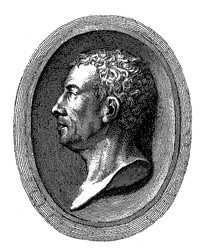Text unten im Passepartout:
Schwerin’s Tod in der Schlacht bei Prag den 6.Mai 1757
u.l.: Lith. von I. Birth
Die Lithographie wurde nach einem Kupferstich von Daniel Berger erstellt und hatte als Vorlage das Gemälde "The Death of Field Marshal Schwerin at the Battle of Prague" von Johann Christoph Frisch.
Im Bildzentrum am Fuße eines Baum in Händen zweier Uniformierter liegt Schwerin im Sterben. Um ihn herum haben sich trauernde Soldaten und Reiter versammelt. Er war seit 1740 preussischer Generalfeldmarschall und kämpfte unter Friedrich II. gegen Österreich. In seinem rechten Arm hängt lose eine Fahne und daneben liegt sein Degen auf dem Boden. Rechts im Hintergrund kann man schemenhaft die Stadt Prag und noch einige Soldaten erkennen.
en

